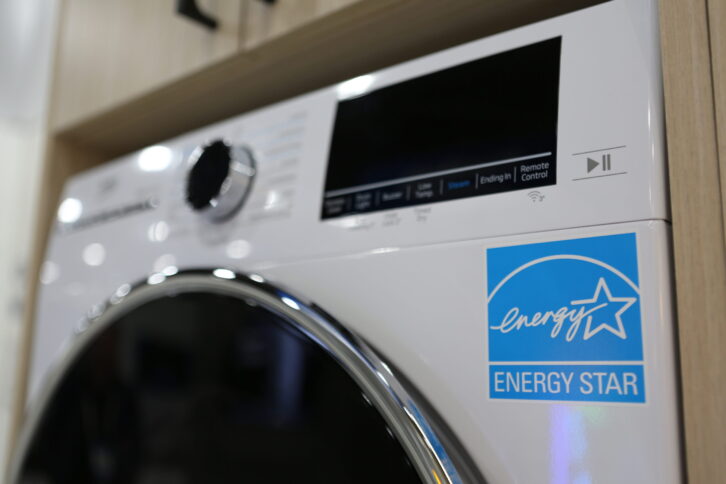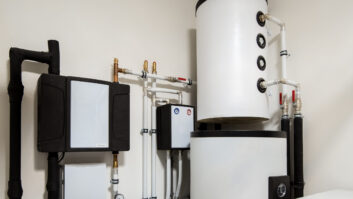
Editor’s Note: This article originally ran on Independent Thinking, Nationwide Marketing Group’s official blog, and is republished with permission. For more information, visit nationwidegroup.org/independentthinking/.
You may have seen the media coverage that Nationwide Marketing Group was recently honored as an ENERGY STAR Partner of the Year – Sustained Excellence. In fact, this was the ninth consecutive year that Nationwide was a recipient of this very prestigious award. The award does not come with any prize or any free media exposure. So, why does Nationwide go through the award application process, which alone consumes many hours of labor, each year?
Nationwide is involved in various ESG (Environmental, Social and Governance) activities as an organization, and ENERGY STAR is at the center of them. That is because our members sell products that consume energy – home appliances and consumer electronics. Creating that energy, whether gas or electric, results in carbon emissions, greenhouse gasses (GHG) and air pollution.
Nationwide has made it our goal and responsibility to facilitate energy savings in various ways. This includes the retailer’s purchase of the most energy-efficient appliances – ENERGY STAR certified. It also includes facilitating product training on the optimal performance of appliances through regular cleaning and maintenance. Finally, there is the efficient consumer use of products like refrigerators, dishwashers and washing machines.
Everyone has an energy efficiency journey. For some, it is more of a dollar-savings journey that just happens to involve energy. In the purchase of a vehicle, the fuel efficiency of the vehicle is front and center, and it typically is a factor in making a purchase decision. When purchasing an appliance, there is also an energy consumption label. But, when you get your gas or electric bill, do you really know how much of that bill is from the use of a single appliance? Not really.
I live in an all-electric home which makes the exercise simpler. The electricity I use is from lots of items both inside and outside the home. There are kitchen appliances, laundry appliances, HVAC, outdoor lighting, indoor lighting, televisions, water heating, fans, small appliances and more. I have never tried to attribute the power consumed in one billing period to the many electric items we use. Most people are not aware of the biggest drivers of their electric bill nor are they aware of the biggest opportunities to save electricity and reduce carbon emissions.
Let’s start with the biggest drivers of your electric/gas bill. As you can imagine, it does depend upon your living situation. The cost of heating and cooling is higher in areas where there are extreme outside temperatures that need to be cooled and heated. There are many people with no air conditioning and some with no heat. Notwithstanding the exceptions, here is the breakdown of where energy is typically consumed:
- Heating: 45%
- Water heating: 18%
- Lighting and electronics: 17%
- Refrigeration, cooking and laundry: 11%
- Cooling: 9%
- Total: 100%
It is interesting to note that, on average, all lighting and televisions operating in the home consume less energy than a water heater. Also, when you combine heating and cooling, it amounts to more than half of the energy consumed by most homes. Whereas this information is insightful, it is important to note this is for the average American home. Yours might not be average.
Now that you know the drivers of energy usage, your next question should be where you can save the most across the categories above. That is not as obvious and not as easy to find out. Over the years, all products that consume electricity have become more efficient. So, the amount of savings possible differs across products.
The one technology that has surfaced to provide the next wave of energy savings is heat pump technology. Heat pumps have been around for many years but have improved in performance and have entered new product categories. Heat pumps have expanded from being part of HVAC systems to also being in clothes dryers and in water heaters.
The energy savings from switching to an electric heat pump water heater from a regular electric water heater is very significant. At average U.S. electric rates, a 50-gallon tank will consume about $550 in electricity per year. With a heat pump, that drops to about $150 per year. This is why the Inflation Reduction Act incentives are so skewed toward heat pumps.
To that end, Nationwide is working to make energy savings easier for our members and their customers through education, merchandising programs and marketing assets. We plan to continue down this path, and the ENERGY STAR Partner of the Year awards will likely come with it, reaffirming that our efforts are doing the right thing for our environment and our future.
About the Author
Frank Sandtner is the director of business services for Nationwide Marketing Group
See also: NMG Earns 2023 ENERGY STAR Partner of the Year – Sustained Excellence Award For 9th Year In A Row













